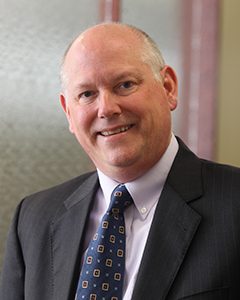SECURE – What It Can Mean for Small Businesses

Understandably, the global and national effects of the COVID-19 pandemic are top of mind today. But, now that we generally appear to be on the downside of the coronavirus’s curve, it is worth revisiting the Setting Every Community Up for Retirement Enhancement (SECURE) Act, and what it can mean to small business owners and their employees.
The most significant retirement plan legislation in more than a decade, SECURE is primarily about broadening participation in qualified retirement plans.
A major component of SECURE is that it dramatically increases tax credits for new plans for employers with 100 or fewer workers. Previously, employers with 20 or more non-highly compensated employees starting a 401(k) could receive $500 a year; now they can receive as much as $5,000 a year for three years.
In addition, SECURE provides another new tax credit of $500 per year for any business adding an automatic enrollment feature to a new or existing retirement plan – bringing the total tax credits to $16,500 over a three-year period—far more incentive for employers than previously existed.
(A quick side note: A tax credit is not the same as a tax deduction. The tax credit reduces the employer’s tax liability dollar-for-dollar; in other words, the $500 tax credit cited above lowers one’s tax bill by a corresponding $500. A tax deduction, on the other hand, lowers a person’s tax liability by reducing their taxable income, thereby lowering the amount of tax one owes.)
Another important component is an alteration of the December 31st deadline to start a new plan. That formerly hard-and-fast deadline resulted in a year-end crunch, with small business owners – who usually have plenty of other matters to deal with at year’s end – often delaying their decision for another year.
Now they can develop, along with their financial advisor, CPA, and so on, a qualified retirement plan for themselves, their family, and maybe some employees they’ve hired along the way. The federal government will now allow you to submit that plan by the usual tax date, April 15th, or on a quarterly tax date – as far out as October 15th.
And the plan can be adopted retroactively, meaning that, in the long run, we should see more new plans being formulated.
Further, SECURE authorizes open multiple-employer plans (MEPs) along with pooled employer plans (PEPs) – which provides small businesses the opportunity to more effectively pool their resources to offer a retirement plan that is cost effective and administratively simpler.
One of the main differences here is that, unlike with a closed MEP, the companies involved need not be working within the same business sector, which made it difficult to realize the economies of scale needed to satisfy MEP requirements. The PEP option will be available starting in 2021.
A Group of Plans (GoP) is another new type of arrangement established by SECURE. Here, employers (unrelated, related or part of the same controlled group) can file a single Form 5500 for multiple defined contribution plans. To be eligible, GoP member plans must – among other things — be an individual account plan or defined contribution plan; operate under the same trustees; and have the same designated fiduciary or fiduciaries. GoPs are scheduled to be made available in 2022.
One remaining issue that should be addressed: The sales and marketing strategy needed to educate clients about MEPs, PEPs and GoPs. How do you go about explaining them to potential customers? Is a PEP the right solution, or should the client be considering other options?
In other words, the SECURE Act is offering many potential improvements to address the country’s retirement savings crisis – but there is still plenty of work to be done to put those opportunities into practice. Beginning to strategize now – with an experienced fiduciary partner like Pentegra is a good place to start.
About the Author
